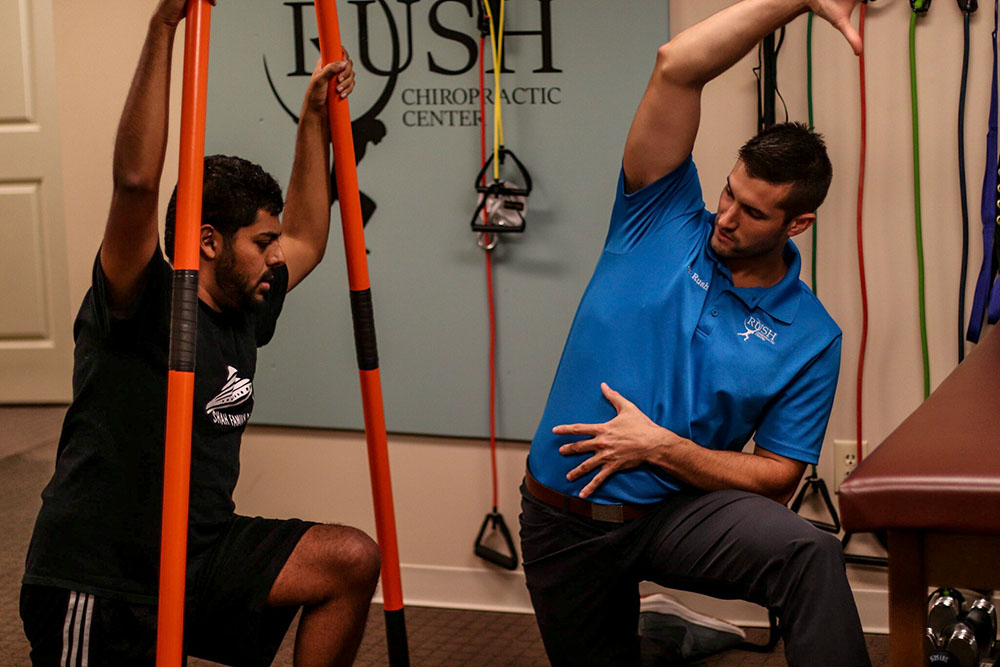We all know that stretching is a great way to improve mobility and flexibility. We all know that we should do it more often, but do we all know the different types of stretches, which type we should be doing, when we should be doing specific types or when we should avoid a certain type? Stick around and I will teach you all you need to know to master the basics of the 4 types of stretches!
Table of Contents
The 4 types of stretches
There are four main types of stretches. Some of these you may have seen or even done before and some you may be just hearing about for the first time. The common stretch technique you may be used to using and seeing are passive stretching and dynamic stretching. These are fairly common techniques that are pretty universal. You may be doing these types of stretches not even knowing the reason, they are just something you do. The other, less common types of stretches, are ballistic stretching and PNF (proprioceptive neuromuscular facilitation) stretching. These are less often used and you may have not even heard of them yet.

Passive Stretching
Passive stretching, also called static stretching, is a technique where the stretcher holds a position to stretch a particular muscle. The stretcher assumes a point of comfortable tension on the muscle and holds this tension for a period of time, usually 30-60 seconds (I recommend 45 seconds). This technique can be performed alone by the stretcher, with the use of a stretching apparatus, or with a partner for assistance.
Passive stretching is a great technique for a “cool down” after a workout, competition or athletic endeavor. This is also a great technique to relieve muscle spasm.
Dynamic Stretching
Dynamic stretching is a technique used to gradually move the stretchers joints and muscles through their ranges of motion. The stretcher dynamically moves their legs and/or arms through their ranges of motion while gradually increasing their reach and/or speed. Do not, however, confuse dynamic stretching with ballistic stretching. Dynamic stretching is performed through the use of controlled arm and leg swings to take you to the limits of your range of motion, while ballistic stretching uses the momentum of the limb swing to push the limbs past their capable ranges of motion. Dynamic stretching involves no jerking or bouncing movement. Dynamic stretching should be used prior to athletic performance, exercise sessions, and sporting events.
Ballistic Stretching
Ballistic stretching is a technique that uses momentum to propel the bodies joints or muscles past their normal limit of motion. The stretcher uses a bouncing or jerking motion to propel themselves into and out of the stretched position. This method of stretching can actually cause muscles to tighten up (through repeated encounters of the stretch reflex) rather than to loosen. This technique has also been shown to lead to injury and in most circumstances is a technique that should be avoided.
Proprioceptive Neuromuscular Facilitation
Proprioceptive neuromuscular facilitation, or PNF, is a technique used to increase passive/static flexibility. The technique is performed through a course of passive stretching, followed by isometric contraction of the muscle in the stretched position, followed by another bout of passive stretching in the resulting increased range of motion. This technique can be done alone or with a partner, although it is typically easier and more effective with a partner. PNF stretching is the best technique to achieve passive/static flexibility.
The PNF technique that I typically use within my office is performed as follows:
- The muscle is stretched passively to the end of its normal range of motion. This stretch is held for about 10 seconds.
- The person being stretched will then actively resist using an isometric contraction of about 10-15% of their maximum force for another 10 second period of time.
- At the end of the isometric contraction the person being stretched will deeply breathe in and out.
- The person being stretched will relax out of contraction and the stretch will be relaxed for 2-3 seconds.
- The muscle will then be stretched to the resulting increased range of motion and the technique can be repeated at this time.
This procedure may be repeated up to five times however I typically stick to about three within my practice.




